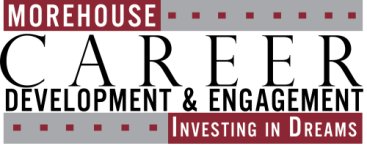Can My Creative Industry Resume Be More Imaginative? was originally published on Ivy Exec.
There’s a time and a place when it comes to creativity in the job application process.
One of those places, for example, is your resume – especially if you work (or are seeking work) in a creative industry like media, design, or marketing.
Recruiters and hiring managers have varying opinions about whether or not you should get imaginative with your resume. While some say you should always keep it simple and to the point, others argue that creativity can help your resume stand out – and show your creative skills rather than just tell them.
When you work in the creative industry, you undoubtedly have more room to play. Still, there’s a fine line between being strategically creative and being unprofessional. So here are four key resume tips to make your resume more imaginative when you work in a creative field.
 Use a visually appealing design.
Use a visually appealing design.
As with any resume for any industry, yours should be visually appealing. That mostly means it should be easy to read.
But it also means that you can choose a design that’s both professional and fun – one that reflects who you are. The design includes but isn’t limited to your font, color scheme, and layout.
Your font should be easy to read. Headers might use a different font or text size to stand out and break up blocks of text. Your colors should be clean and consistent with your personal brand. While you can certainly have fun with color palettes, make sure that any colors you use work well together and don’t detract from the rest of your resume. And your layout should flow well and be simple to follow. Bullets and framing can also help break up heavier chunks of text.
 Tell your story with your resume.
Tell your story with your resume.
Your resume is a place to talk about all of your accomplishments, experiences, and skills. But instead of just telling recruiters and hiring managers how creative you are, you can also show them. For example, using numbers and statistics to quantify your impact and demonstrate your value can be very eye-catching. You can make it even more eye-catching by using icons, graphs, and other symbols on your resume where they make sense.
Overall, you want your resume to tell your story by showing your personality and professionalism all in one. So don’t forget to also include your interests, volunteer work, and any extracurricular activities that potential employers may be curious to know. Showing that you’re a well-rounded person ups the creativity points, as well.
 Include multimedia elements.
Include multimedia elements.
While including your headshot on your resume is a hit or miss, other multimedia elements are more widely accepted (and even encouraged in the creative industry).
If you are a photographer, for example, including examples of your work on your resume can help it to stand out. You are also likely to have a portfolio or social media profile with more examples of your work, to which you should absolutely link.
Similarly, rather than listing on your resume that you’re proficient in design software, you can actively demonstrate your capabilities with dynamic or interactive formatting.
Just make sure that whatever elements you share on your resume are relevant to the job for which you’re applying. These elements should only enhance your overall presentation, not distract from what’s important information.
 Keep applicant tracking systems in mind.
Keep applicant tracking systems in mind.
Many companies use applicant tracking systems to sift through vast amounts of resumes.
These systems look for keywords and phrases. Resumes without them may not make the cut. And, if your resume has them, but they’re not detectable (because they’re images instead of text, for example), you could ruin your chances of getting a foot in the door.
Be mindful of applicant tracking systems, and make sure that your less-traditional resume can still be uploaded and reformatted for different readers (humans and technology). If you’re handing or emailing your resume directly to someone, you can get a little more creative than you could if you’re applying for a job through an online portal (like LinkedIn’s Easy Apply).
The bottom line
A creative resume is a wise way to stand out from the competition and uniquely showcase your skills and talents.
Using a visually appealing design, telling your story, and including multimedia elements in your resume can help build your case and convince recruiters and hiring managers to call you in for an interview.
By following these tips, you can write up a resume that’s personal and professional. But while a creative resume may catch the eyes of many, they’re not right for every job or industry. Always ask yourself if your resume makes sense for the position – and tweak it or cut the creative elements if not.

